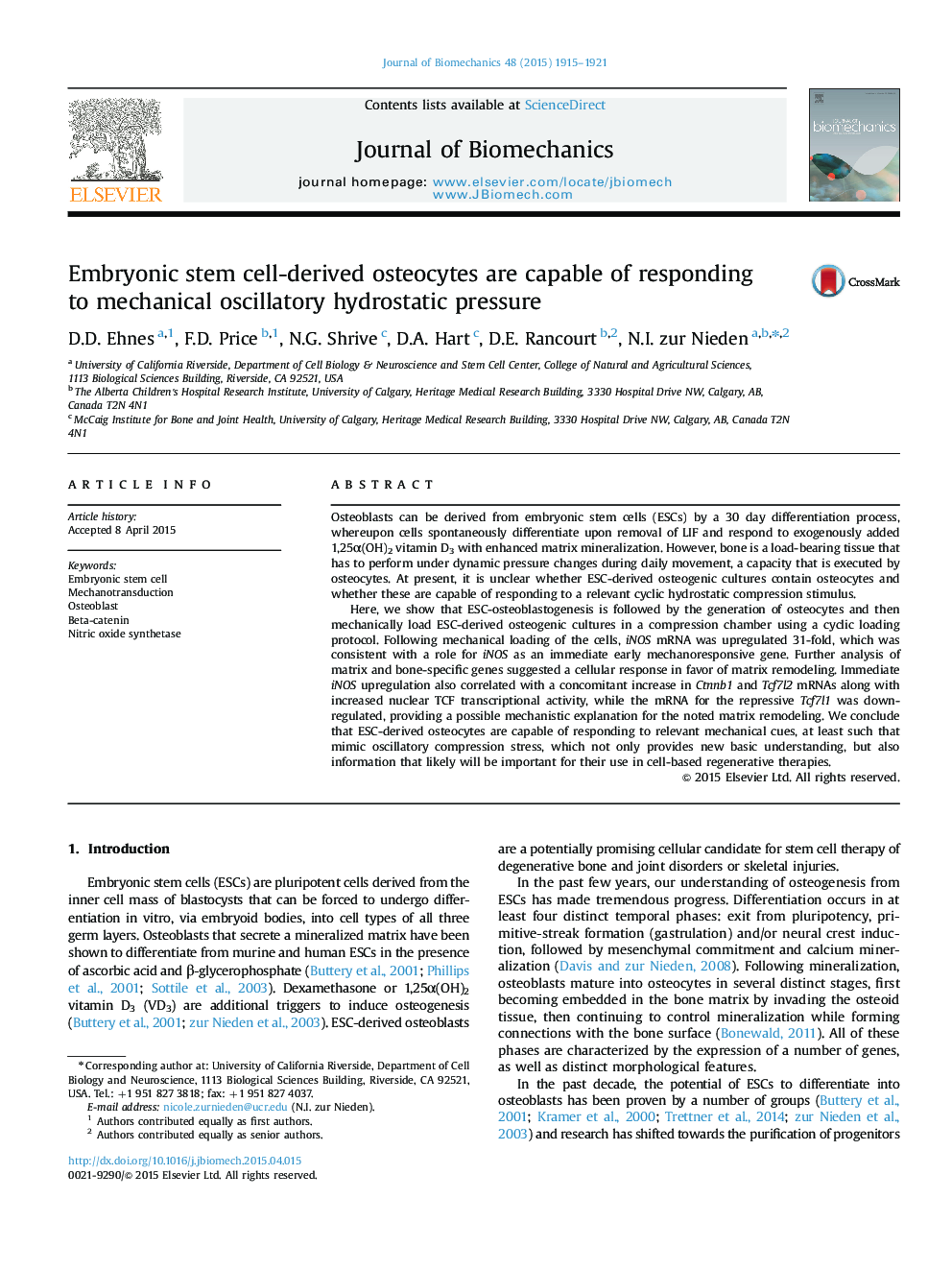| Article ID | Journal | Published Year | Pages | File Type |
|---|---|---|---|---|
| 10431404 | Journal of Biomechanics | 2015 | 7 Pages |
Abstract
Here, we show that ESC-osteoblastogenesis is followed by the generation of osteocytes and then mechanically load ESC-derived osteogenic cultures in a compression chamber using a cyclic loading protocol. Following mechanical loading of the cells, iNOS mRNA was upregulated 31-fold, which was consistent with a role for iNOS as an immediate early mechanoresponsive gene. Further analysis of matrix and bone-specific genes suggested a cellular response in favor of matrix remodeling. Immediate iNOS upregulation also correlated with a concomitant increase in Ctnnb1 and Tcf7l2 mRNAs along with increased nuclear TCF transcriptional activity, while the mRNA for the repressive Tcf7l1 was downregulated, providing a possible mechanistic explanation for the noted matrix remodeling. We conclude that ESC-derived osteocytes are capable of responding to relevant mechanical cues, at least such that mimic oscillatory compression stress, which not only provides new basic understanding, but also information that likely will be important for their use in cell-based regenerative therapies.
Related Topics
Physical Sciences and Engineering
Engineering
Biomedical Engineering
Authors
D.D. Ehnes, F.D. Price, N.G. Shrive, D.A. Hart, D.E. Rancourt, N.I. zur Nieden,
